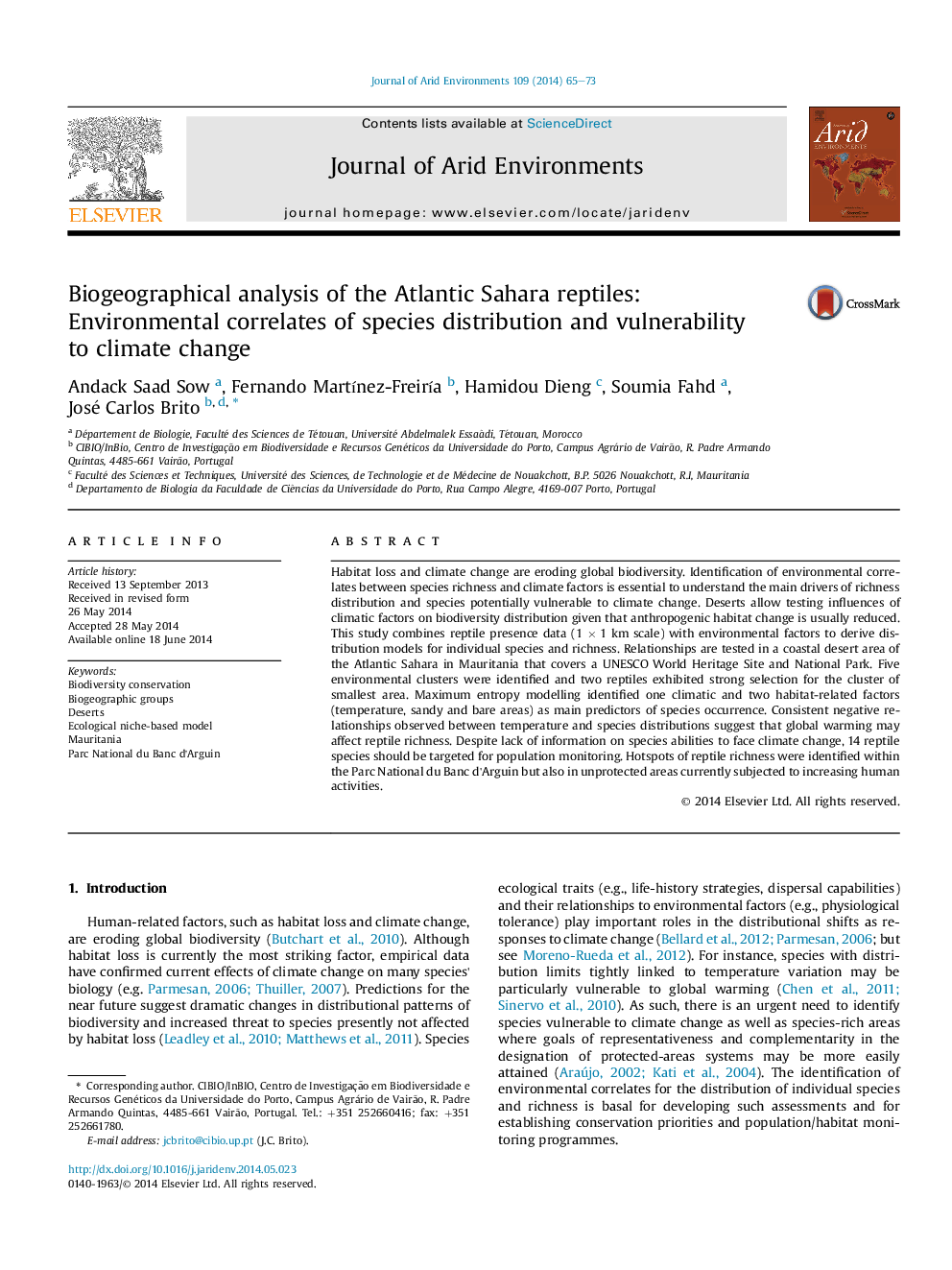| کد مقاله | کد نشریه | سال انتشار | مقاله انگلیسی | نسخه تمام متن |
|---|---|---|---|---|
| 4392976 | 1618249 | 2014 | 9 صفحه PDF | دانلود رایگان |
• Relationships between reptile occurrence and environmental factors were tested.
• Models were derived in the Atlantic Sahara, including a National Park/UNESCO site.
• Negative relationships were observed between temperature and species distribution.
• Global warming may affect 14 reptiles that should be targeted for monitoring.
• Richness hotspots marginal to the park are subjected to increasing human activities.
Habitat loss and climate change are eroding global biodiversity. Identification of environmental correlates between species richness and climate factors is essential to understand the main drivers of richness distribution and species potentially vulnerable to climate change. Deserts allow testing influences of climatic factors on biodiversity distribution given that anthropogenic habitat change is usually reduced. This study combines reptile presence data (1 × 1 km scale) with environmental factors to derive distribution models for individual species and richness. Relationships are tested in a coastal desert area of the Atlantic Sahara in Mauritania that covers a UNESCO World Heritage Site and National Park. Five environmental clusters were identified and two reptiles exhibited strong selection for the cluster of smallest area. Maximum entropy modelling identified one climatic and two habitat-related factors (temperature, sandy and bare areas) as main predictors of species occurrence. Consistent negative relationships observed between temperature and species distributions suggest that global warming may affect reptile richness. Despite lack of information on species abilities to face climate change, 14 reptile species should be targeted for population monitoring. Hotspots of reptile richness were identified within the Parc National du Banc d'Arguin but also in unprotected areas currently subjected to increasing human activities.
Figure optionsDownload as PowerPoint slide
Journal: Journal of Arid Environments - Volume 109, October 2014, Pages 65–73
